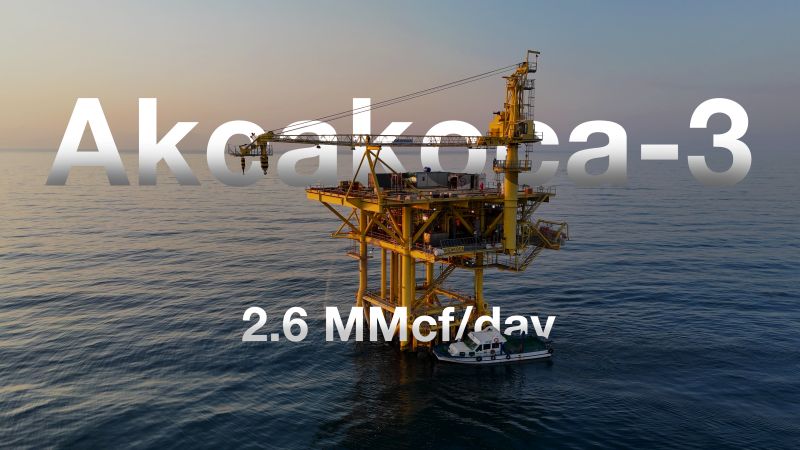Recent post-velocity operations enhance efficiency, securing Turkey’s energy independence goals.
Following targeted post-velocity string operations, the Akçakoca-3 natural gas well has achieved a significant increase in its daily production rates. The well, which previously yielded an average of approximately 2.0 million cubic feet per day (MMcf/d), now outputs 2.6 MMcf/d—a substantial 30% increase. This boost not only underscores the importance of technical optimization in natural gas extraction but also serves as a strategic enhancement to Turkey’s domestic energy production efforts.
The Akçakoca-3 well, located in Turkey’s Black Sea region, is a part of the broader Sakarya Gas Field Project aimed at tapping into substantial natural gas reserves. The region has emerged as a critical component of Turkey’s goal for energy self-sufficiency, with significant investments made in recent years to ensure its full operational capacity.
According to the Ministry of Energy, this production surge exemplifies the impact of advanced well interventions, like the post-velocity string adjustments implemented at Akçakoca-3. String operations typically involve the adjustment or replacement of specific components within the well, enhancing fluid flow dynamics and, in turn, the rate at which natural gas is extracted. By carefully recalibrating the internal components, engineers were able to reduce flow restrictions, allowing for a more efficient gas extraction process.
Strategic Energy Independence
The increase in Akçakoca-3’s production aligns with Turkey’s broader strategy to reduce its reliance on imported energy sources. Turkey currently imports a significant portion of its natural gas needs, but with the advancements at Akçakoca-3, officials hope to see a notable shift in the country’s energy profile. Over time, such enhancements could reduce Turkey’s energy expenditure and boost the country’s energy security.
The Ministry emphasized that this technical success at Akçakoca-3 could serve as a model for other wells in the region, particularly for newer drills set to come online in the coming years. The Sakarya Gas Field, in which Akçakoca-3 plays a pivotal role, is estimated to hold approximately 540 billion cubic meters of natural gas, with production expected to meet a significant portion of Turkey’s domestic demand.
Broader Impact and Future Plans
The success of the post-velocity string operations opens the door for similar technical improvements across Turkey’s offshore assets, especially those in the Black Sea basin. Industry experts view the results at Akçakoca-3 as promising, noting that other wells could see comparable production increases through similar interventions. Such advances could fast-track Turkey’s roadmap for reducing its dependence on foreign energy, achieving milestones that previously seemed out of reach.
This 30% increase not only demonstrates Turkey’s commitment to enhancing its domestic resources but also underscores the country’s growing expertise in managing and optimizing complex natural gas operations. As the government and private sector continue to invest in such projects, Turkey’s long-term energy strategy looks increasingly feasible, with hopes of leveraging the full potential of the nation’s Black Sea reserves.
Industry Outlook
Looking forward, Turkey’s Ministry of Energy has indicated plans to conduct additional technical studies on other wells in the Sakarya Gas Field. The objective is to apply lessons learned from Akçakoca-3 to maximize yield across the region. With additional string operations and advanced engineering techniques, Turkey may soon see similar improvements in other key wells, bolstering the nation’s path to energy independence.
The Akçakoca-3 success story stands as a testament to the impact of innovative technical adjustments in well management, demonstrating the tangible benefits of strategic investments in Turkey’s energy future.






